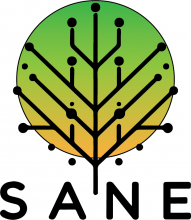SANE: ViSual ANalytics for Event-based Diffusion on Networks
Pandemics, computer malware attacks, misinformation campaigns – all of these phenomena have one thing in common: some kind of “information” (a pathogen, a virus, fake news) that spreads across an underlying structure of elements interconnected between each other by some kind of relationship (physical contacts, public WiFi, social networks). In Computer Science, such structures are known as graphs or networks – and have been extensively researched. Within this formalization, the phenomena described above are referred to as diffusion processes, and their dynamics have been studied and researched to obtain models that allow researchers and institutions predict, mitigate, and generally understand such complex events. Visual Analytics (VA) showed its potential in communicating and investigating information diffusion processes over networks. Diffusion processes are highly dynamic and stochastic phenomena. To this end, VA needs to tackle two challenges: representing the progression on the underlying dynamic network structure and capturing the uncertainty of the process. The majority of existing VA approaches approximate the problem by imposing a discrete time structure to the input data and disregarding uncertainties.
By focusing on the real-time coordinates of the individual propagation events (hence, event-based), we better approximate real-world interactions, improving confidence in the analysis and prediction results. However, this greatly increases the complexity of the problem from both an algorithmic and methodological perspective, and requires a revision of the existing paradigms for the representation of event-based uncertain networks. We call this problem “VA of Event-based Information Diffusion with Uncertainty”. We aim to (i) provide a data-task characterization of the information diffusion domain in VA with a typology of the representation of uncertainty on event-based networks, (ii) contribute the current state-of-the-art of temporal graph layout algorithms to improve their accessibility and introduce specific layout strategies to let the underlying diffusion process to shape the final network representation, and (iii) establish a seamless workflow for the visualization of event-based diffusion processes, to serve as a common ground and inspiration for further research in this field.
We strive to be among the first to systematically explore the design space of VA for event-based information diffusion with uncertainty. We investigate promising but currently under-represented research trends in VA with innovative solutions and approaches, to contribute to the current body of knowledge in the field and open new and exciting research questions.
University of Cologne (DE):
- Prof. Tatiana von Landesberger (Partner Agency Leader)
- Dr. Max Sondag (External Collaborator)
- Tom Baumgartl (PhD candidate)
University of Newcastle (UK):
- Prof. Daniel Archambault (External Collaborator)
Austrian Science Fund (FWF), grant [I 6635] ; Grant-DOI [10.55776/I6635]
For information, contact:
- Alessio Arleo, a [.] arleo [at] tue [.] nl














